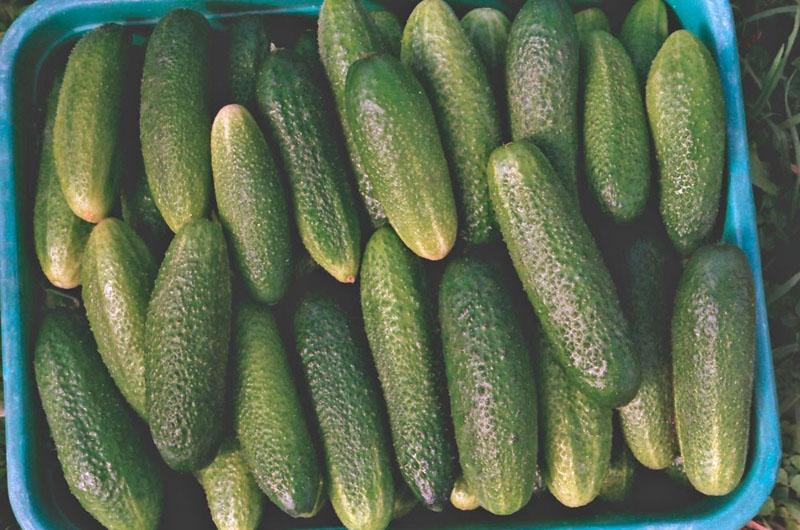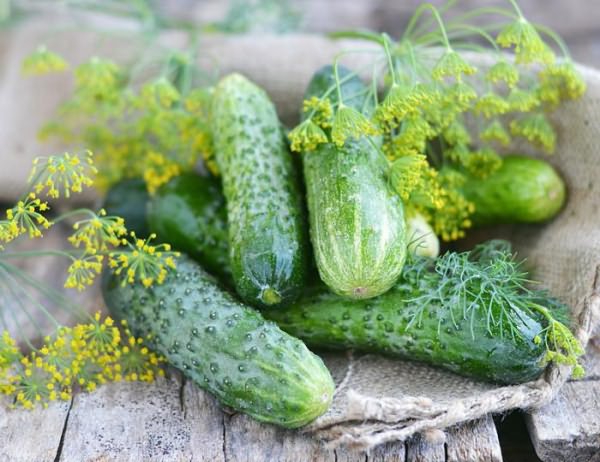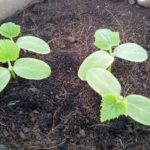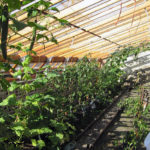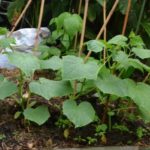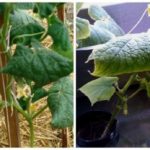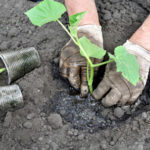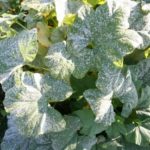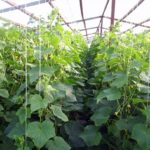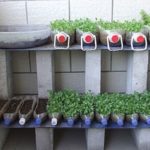Connie cucumbers are a unique modern hybrid that has a strong stem and small fruits. They are preferred by those who love small cucumbers. They are ideal for salads and pickling in small jars.
This is one of the famous varieties of cucumbers that bears fruit early. It is not afraid of cold weather and grows calmly without the presence of greenhouses. Connie variety cucumbers have an f1 particle, which means a first generation hybrid.
Details about the variety
A description of the cucumber variety is contained on the seed packet. This hybrid adapts to any climate and grows in greenhouses and open ground.The harvest is usually rich and does not require special pollination.
Fruit characteristics:
- Small elongated shape, short, do not grow longer than 10 cm;
- The skin is thin, there are small bubbles on it, sometimes a small fluff;
- The weight of one vegetable is no more than 100 grams;
- The color is mostly dark green;
- The taste is crispy, juicy, sweet.
Connie bushes are medium length, with small loops on the stem. This species loves moderate humidity, good watering and fertile soil.
How to achieve high yield
Growing this variety requires certain rules. If gardeners want high yields, then they should follow them.
One of the main requirements is the location where the plantings will take place. Even if it is a greenhouse, it should not be located in a low-lying area, on an area well lit by the sun. Also, cucumbers do not like to be planted in the same place.
Every year you need to change the type of plants in greenhouses. And it should also be taken into account that after melon crops, this variety will bear fruit poorly. But after peppers, tomatoes, zucchini, and beans, there will be a wonderful harvest.
In order for there to be more fruits, you must always water, feed, and loosen the soil on time. Connie f1 cucumbers love good, fertilized soil. Before planting in the ground, you need to wait for the seeds to sprout. During this time, you need to maintain the required temperature, humidity, light, and feed. Mature seedlings with good leaves are then planted in beds or in a greenhouse.
How to plant seedlings
Cucumber Connie f1 in northern latitudes is planted in beds only as seedlings. This way there is a greater chance that the fruits will have time to ripen. The land for planting is prepared in advance.First, they dig out the top 20-30 centimeters of soil, fertilize the holes with pine needles, peat, hay, and put manure or humus on top. The top is already covered back with loose soil.
If the seedlings are not planted in a greenhouse, then the prepared bed is watered, covered with film and left for several days. Then the sprouts are planted in moist soil with fertilizers. While they get used to the new place, it is better not to touch or water them for a week.
Seedlings are planted in a greenhouse in the form of a checkerboard. To do this, first dig holes and water them with non-cold water. Then fertilize and plant bushes.
Caring for bushes in open ground differs from caring for them in greenhouses. If you know about all the nuances, you can always get a high-quality harvest, regardless of weather conditions and climate. Vegetables ripen quickly, and already in mid-summer you can enjoy them.
Rules for caring for cucumbers in a greenhouse
Growing cucumbers in a greenhouse is an art. In addition to standard watering and fertilizing of plants, you also need to know about maintaining the required temperature, moisture, and light.
- To ensure that the greenhouse always has the required temperature, you need to ventilate it by opening windows and doors. If the summer turns out to be very hot and sunny, then you can tint some windows or spray dissolved chalk on the walls.
- The humidity must be sufficient. During the dry season, be sure to water well and spray the foliage. You can purchase a moisture meter for greenhouses.
- Cucumbers love high-quality watering. Typically, greenhouses need to be watered twice a week. Watering is done at the root, but the water should not be icy.
- It is necessary to loosen the soil of these plants. The first loosening should begin a month after planting the seedlings. Then - always, as soon as the ground is trampled down.This must be done carefully so as not to harm the roots.
- Experienced gardeners place a large bucket or barrel of water in the greenhouse, and add foliage, grass, and manure. All this should remain like this until the fall. In this way, fermentation occurs in the greenhouse due to the increase in carbon.
- Good fertilized soil and plant nutrition will ensure excellent fruiting.
You need to feed correctly at certain times. After planting before flowering, cucumbers like fertilizer to promote growth, vitamin absorption, and resistance to changing locations. This is necessary for the plant to adapt and begin to grow actively without stress.
When flowers begin to appear, you can feed them with superphosphate, potassium, humate, and manganese to speed up fruiting. You can put manure and bird droppings around it.
With the appearance of the first fruits, it is necessary to introduce a means to improve taste, integrity, and resistance to adverse conditions. If the plant is well fed, then the vegetables will be tasty and healthy, there will be a lot of them. It is better to feed in the evening, when the sun's rays are not too hot. It is important not to increase the dosage of fertilizers, otherwise you may destroy the bushes.
Planting shoots in a greenhouse is not as difficult as caring for them. But if you do everything right, the cucumbers will grow as they should.
Possible diseases and pests
The Connie cucumber variety, like other cultivated plants, is susceptible to some diseases and attacks by harmful insects.
Aphids, butterflies, bugs, and caterpillars can overpower plants if no measures are taken. For prevention, protection is always necessary. Spraying with any insect repellent is fine. This should be done at least once a month, if there are none.
When pests begin to destroy the crop, it is visible to the naked eye. The leaves begin to curl and become covered with viscous mucus and spots. They often move from weeds to cultivated shoots. Therefore, weeding is very important.
Most common cucumber disease - it's a fungus. Spots, rot, and grayness form on the fruits. The reason for this may be bad dew, rain, or humidity. For prevention, it is necessary to ensure high-quality watering, ventilation of greenhouses, and regulation of the level of moisture in them.
If dew is a common occurrence in the area, then it is better not to plant seedlings in open ground. Sometimes the soil itself is contaminated. This can be seen in berries and vegetables. They have white wet spots and rot quickly. Removing the source of infection is not easy. But you can spray the soil. Potassium permanganate, chamomile infusion, boric acid, soda, copper, and zinc are excellent in the fight against fungus.
In practice, there are very few cases when this variety is sick. Basically, the hybrid is immune to disease.
What gardeners say
There are reviews from experienced and beginner gardeners who have tried this type. Overall they are pleased with the harvest and the crisp taste of the early fruits.
The sun is still baking at the height of summer, and Connie is one of the first in the garden to produce a harvest. This is the earliest variety. This is why they prefer him.
Growing it is quite simple, you just need to fertilize and water the soil in time. Small sizes allow you to salt in small containers, and the crispy unusual taste leaves no one indifferent.
Unlike other types, they never taste bitter, they are always sweet and aromatic. They ripen very neatly on branches of almost the same length.
Connie's cucumbers are a favorite among summer residents. They can easily be grown in garden beds to produce crunchy, neat vegetables.The most important thing is proper care, high-quality fertilizer and thorough watering.



